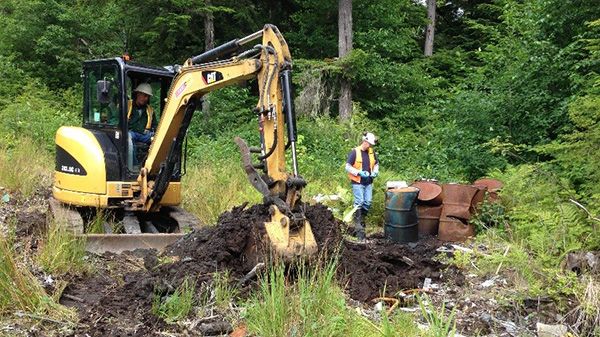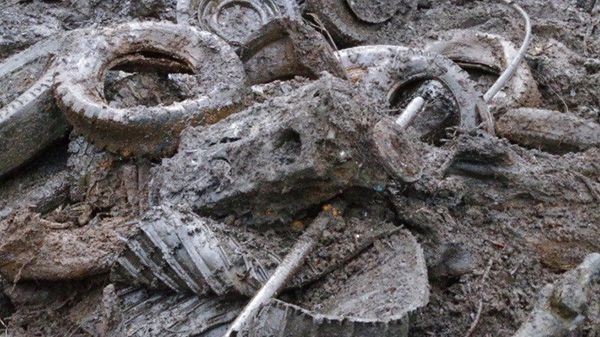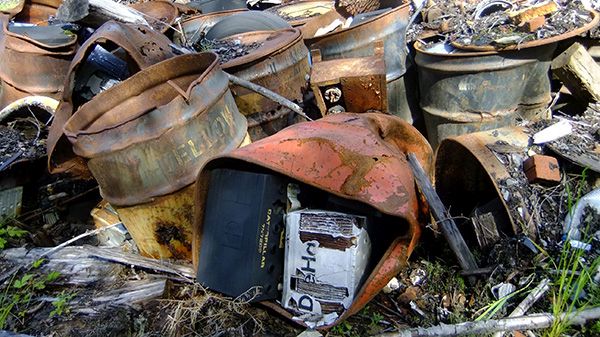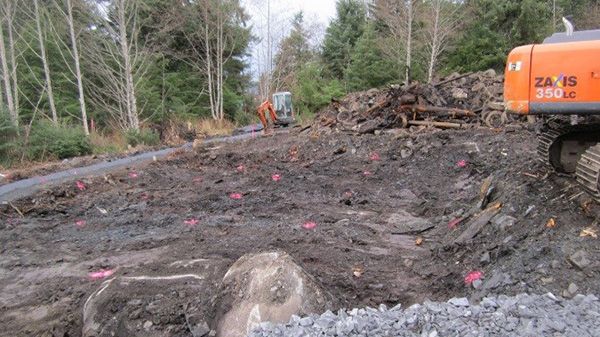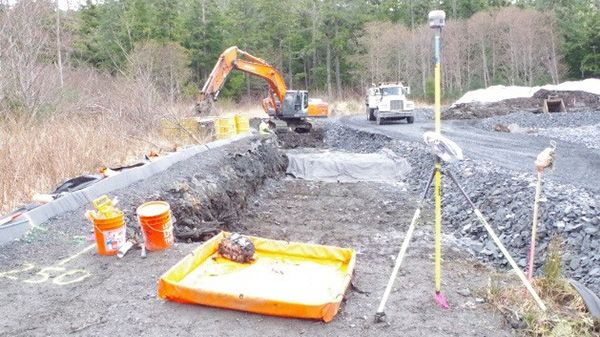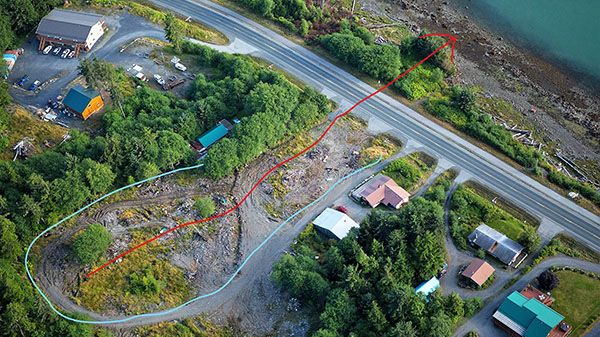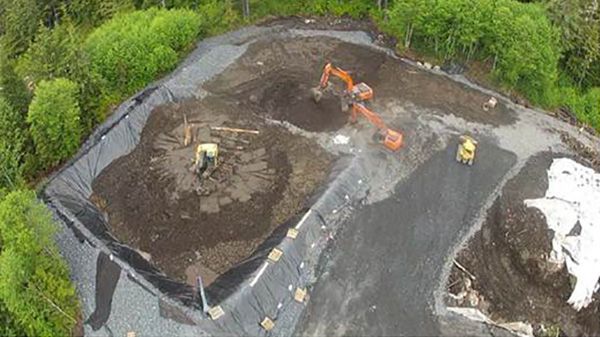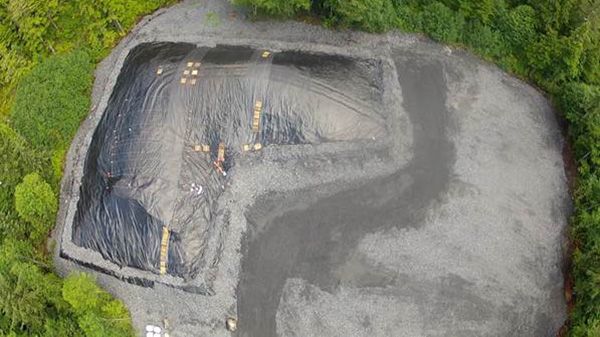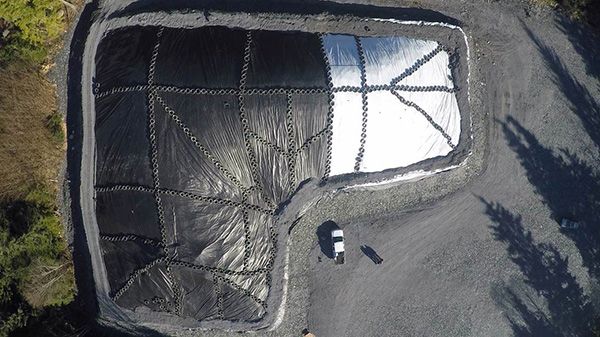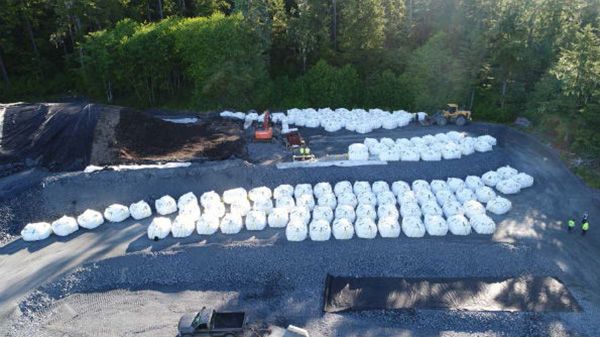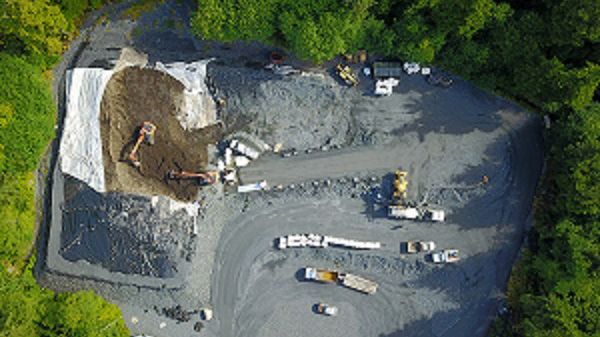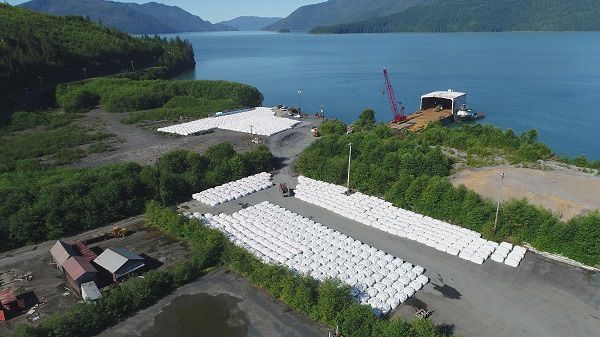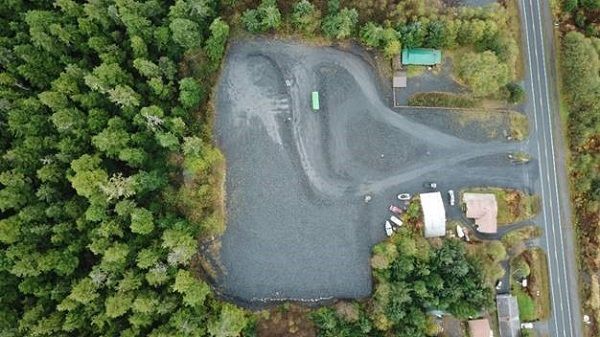Wrangell Junkyard
- View detailed information from the database on this site.
- Database Name: Wrangell Junkyard
- Status: Cleanup Complete
- Location: Wrangell
- Latitude: 56.422290
- Longitude: -132.357175
4-Mile Zimovia Highway
DEC Contaminated Sites contact: No Longer Assigned dec.icunit@alaska.gov, 907-465-5229
- Click on photos or maps for larger versions.
- Contacts updated: 12/19/2022
- Summary updated: 4/24/2019
Site Narrative
Cleanup Complete
On April 19, 2019, the CS program issued a cleanup complete determination for the Wrangell Junkyard lead contaminated site cleanup project. This marks the conclusion of the department’s effort to address the risks at this site dating back to 2000, when CS staff first conducted a site inspection. In the intervening years, DEC partnered with EPA and the City and Borough of Wrangell to establish the degree and extent of contamination from lead, other heavy metals, PCBs and petroleum from this former unpermitted salvage site that had operated since the 1960s. Concentrations of lead saturated the 2.51-acre site to levels as high as 155,000 mg/kg, and lead and other contaminants were found on three adjacent properties and leaching into the nearby intertidal area where recreational shellfish gathering occurs. The volume of lead contaminated soil found was ultimately more than four and a half times the initial estimates and eventually totaled 18,500 cubic yards. The 2016 DEC-led cleanup excavated all contaminated soil at the site and adjacent properties to residential cleanup levels and stabilized it with a product called EcoBond, which rendered the material non-hazardous. By the fall of 2018, DEC’s contractors had shipped some 30,000 tons of contaminated soil, wastes, and debris from the site to a disposal facility in the Lower ‘48. The total cost to clean up and restore the site was approximately $17.5 million. The property is now ready for beneficial reuse and redevelopment by the City and Borough of Wrangell to support the community’s economic development goals.
Site Background and Description
The Wrangell Junkyard operated on the property as Byford Salvage from the 1960s until the late 1990s when the property was sold. The new owner barged out the marketable metal for salvage over a short period of time before abandoning the property, leaving large piles of metal and other debris and improperly stored hazardous materials including hundreds of batteries, transformers, tanks, drums and tires.
Between 2000 and 2004, EPA and DEC conducted limited site assessment work on the property because the responsible parties were unable to do so. However, much of the site was not accessible due to the large volume of debris/waste on the surface. In 2006, the City of Wrangell foreclosed on the property due to unpaid property taxes. Beginning in 2010, the City began clearing the metal debris from the site but lacked the financial and technical resources to conduct the necessary cleanup. Because of this, they applied for Targeted Brownfield Services from EPA to help address the site.
In 2014, EPA Region 10 conducted a Targeted Brownfield Assessment at the site on behalf of the City and Borough of Wrangell. The results, published in 2015, documented extremely high levels of contamination. Surface soil samples collected over a large area of the property contained lead concentrations over 10,000 mg/kg and as high as 50,000 mg/kg, or 125 times the DEC Method Two Soil cleanup level of 400 mg/kg. Additionally, sample results from subsurface soil, surface water, groundwater, marine sediments, and shellfish tissue contained elevated concentrations of lead and other contaminants. In spring 2015, EPA determined the site poses an imminent risk to human health and the environment and initiated plans to conduct a Time Critical Removal Action under Superfund, but the Gold King Mine release in Colorado subsequently became a higher EPA response priority. DEC concurred with the EPA determination that an imminent and substantial risk to human health and the environment is present at the site and in late 2015 initiated a state-led emergency cleanup of the site to address the risks.
Public Health and Environmental Concerns
Environmental sampling has identified extremely high levels of lead in surface soils, elevated concentrations of lead in surface water and groundwater, and trace concentrations of lead and other metals in sediments and fish tissue in the intertidal area downgradient of the site. The City and Borough of Wrangell has advised residents who might clam on the beach in front of the Byford property that shellfish harvested in this area could be contaminated with lead and other metals transported by water runoff from the Byford property. An evaluation by the Alaska Department of Health and Social Services Epidemiology Division has determined the levels of metals in the shellfish tested did not pose a risk to human health at normal rates of consumption. Additional risks are potentially posed to adjacent property owners due to contamination that may extend onto their properties. Left unaddressed, the site itself poses substantial risks to humans and ecological receptors from uncontrolled lead exposure.
Recent History
In fall 2015, the Department approved a Contaminated Sites Program request to spend up to $3.9 million from the Response Account of the Oil and Hazardous Substance Release Prevention and Response Fund to perform an emergency cleanup at the site. During the initial stages of the removal action, the DEC contractor installed silt fences and impermeable berms along the edges of the property, redirected inflowing drainages and established collection points for the on-site drainages. During construction of an access road in 2016 large quantities of buried metal, rubber and wood debris were found. Although no new contaminants were found the volume of contaminated material requiring treatment was much greater than originally estimated; perhaps four times as much.
The state expected to have the contractor complete most of the work by late May of 2016 and to have the treated material removed and transported to a hazardous waste facility in Oregon. But when the estimated total volume expanded to over 18,000 cubic yards, the new plan became to treat soil and store it on-site.
Based on the elevated concentrations of lead and other petroleum contamination found in the soil DEC made source area removal a priority to prevent acute exposure risks onsite and continued offsite migration of contaminants. The lead and other contaminants posed an imminent and substantial risk to surface water, sediment and shellfish in a popular harvest area on Zimovia Straits.
The large volume of material to be treated also increased the estimated cost to $6.5 million. The contractors began treating the soil with Ecobond, a proprietary compound that reduces the solubility of lead in the soil. This protects both ground water and surface water. Done correctly and tested to make sure treatment was successful, the soil is then considered non-hazardous, and the soil can be stored locally in a permanent monofill repository.
Monofill Construction
In August 2016 the EPA, DEC, DNR, and city evaluated several sites to determine the best storage option as well as the costs and funding to find a permanent storage solution for the soil. DNR, one of the land owners impacted from the contaminated site, made available a former material site on Pats Creek Road located five miles south of the site to permanently store the material. The site, a quarry enclosed on three sides by high walls with limited drainage concerns, was deemed to be ideal.
In Fall of 2016, DEC began work to study the proposed site, a DNR owned rock pit on Pats Creek Road. This included preparing a development plan for DNR and a leachability and hydrologic study to evaluate the site's conditions for suitability as a monofill location. Following the results of this study, the EPA contributed to the project by having their contractors prepare an engineering design for the monofill specific to this location. In December of 2016 and January of 2017, damage occurred to the stockpile cover and had to be repaired and significantly reinforced.
In the summer of 2017, the DEC issued a contract for monofill construction and a separate contract for engineering services. In late August of 2017, in response to local concerns about the proposed construction of the monofill, the department agreed to prepare the proposed site, but postpone transport of the treated material until April 1, 2018. The project was halted to allow the Wrangell community, including the Wrangell Cooperative Association (WCA) and the CBW, to explore potential disposal options with DEC, including alternative locations for the monofill and shipping and disposal of the material at a facility in the lower ’48. Preparation of the rock pit was completed in fall of 2017, but no material was moved into the pit.
Over the next seven months, the DEC met with the WCA and the CBW to discuss the project and address their questions; investigated a number of potential alternative disposal locations for a total of 15 sites; responded in writing to a variety of technical questions and information requests from WCA and CBW about the project, the site selection process, EcoBond treatment, post-closure monitoring of the monofill, availability of additional funding, and the detailed costs and logistics of shipping the material out of state for disposal. In addition, the CBW and WCA independently investigated other funding sources that could be used to fund the difference in cost between local and out of state disposal.
In May of 2018, as the monofill construction was about to begin, the Governor requested funding be added to the FY19 state capital projects budget to cover the cost of shipping and disposal in lieu of monofill disposal. The Alaska Legislature approved the request for $5 million, but mandated that it be funded out of the state's Emergency Account of the Oil and Hazardous Substance Release Prevention and Response Fund.
Soil Shipping and Disposal - Project Documents:
- Public Notice- Wrangell Junkyard Cleanup Final Phase
- Wrangell Soil Transport and Disposal Work Plan June 5, 2018 (PDF)
- DEC Approval Wrangell Soil Transport & Disposal Work Plan June 5, 2018 (PDF)
- Project status update week ending 6-10-18 (PDF)
- Project status update week ending 6-17-18 (PDF)
- Project status update week ending 7-1-18 (PDF)
- Project status update week ending 7-8-18 (PDF)
- Project status update week ending 7-15-18 (PDF)
- Project status update week ending 7-22-18 (PDF)
- Project status update week ending 7-29-18 (PDF)
- Project status update week ending 8-5-18 (PDF)
- Project status update week ending 8-12-18 (PDF)
- Project status update week ending 8-19-18 (PDF)
- Project status update week ending 8-26-18 (PDF)
- Project status update week ending 9-2-18 (PDF)
- Project status update week ending 9-9-18 (PDF)
- Project status update week ending 9-16-18 (PDF)
- Project status update week ending 9-23-18 (PDF)
- Project status update week ending 9-30-18 (PDF)
- Project status update week ending 10-7-18 (PDF)
- Project status update week ending 10-14-18 (PDF)
- Project status update week ending 10-21-18 (PDF)
- Project status update week ending 10-28-18 (PDF)
- 2018 Post Removal Sampling and Analysis Plan (PDF)
- 2018 Site Restoration Plan (PDF)
Monofill Construction - Project Documents:
- Monofill Disposal Fact Sheet May 2018 (PDF)
- Revised Cap Design May 4 2018(PDF)
- Weston Solutions Updated HELP Model on Revised Cap Design May 2018 (PDF)
- Weston Solutions HELP Model Evaluation of Two Cap Designs April 2018 (PDF)
- Weston Solutions Fate and Transport Modeling Report (PDF)
- DEC/Nortech Response to CSP2 TCLP Comparison Inquiry April 2018 (PDF)
- DEC Response to CSP2 and Sampling and Analysis Report April 2018 (PDF)
- WCA-CSP2 Report of Recommendations on the Proposed Monofill March 2018 (PDF)
- Summary of Sites Evaluated for the Monofill - updated February 2018 (PDF)
- DEC Response to Questions from the Wrangell Cooperative Association January 2018 (PDF)
- DEC Response to Questions from the Wrangell Cooperative Association December 2018 (PDF)
- DEC Response to Questions from the City and Borough Wrangell September 2017 (PDF)
- Baseline Sampling Report October 2017 (PDF)
- Monofill Basis of Design and Design Package (PDF)
- Monofill Hydrologic and Leachability Study for the Pat's Creek Rock Pit- Final Report (PDF)
- Wrangell Monofill Final Topographical Survey (PDF)
- DNR Development Plan for the Wrangell Monofill (PDF)
- Wrangell Monofill - USFS Road Access Permit for Pats Creek Road (PDF)

